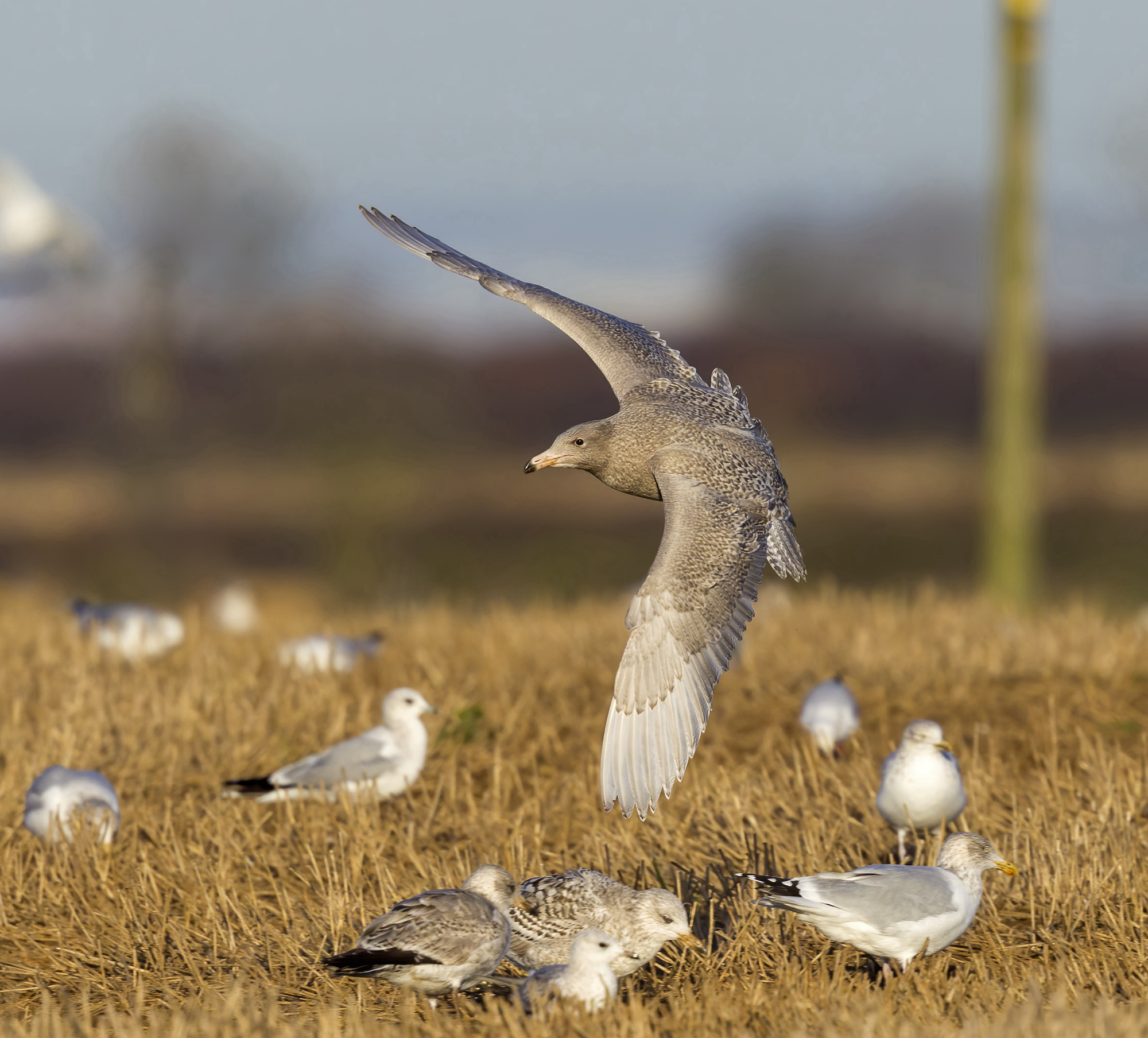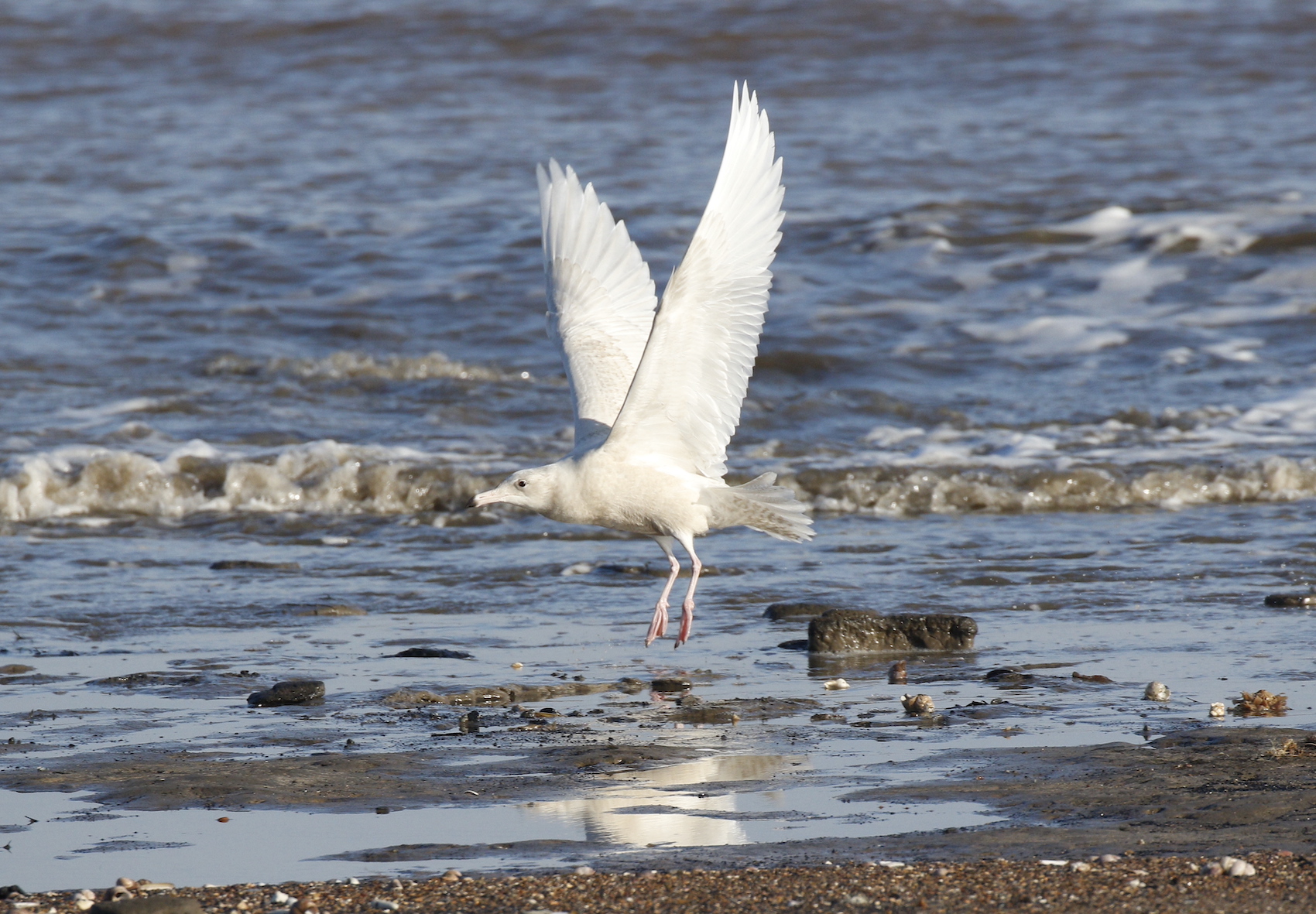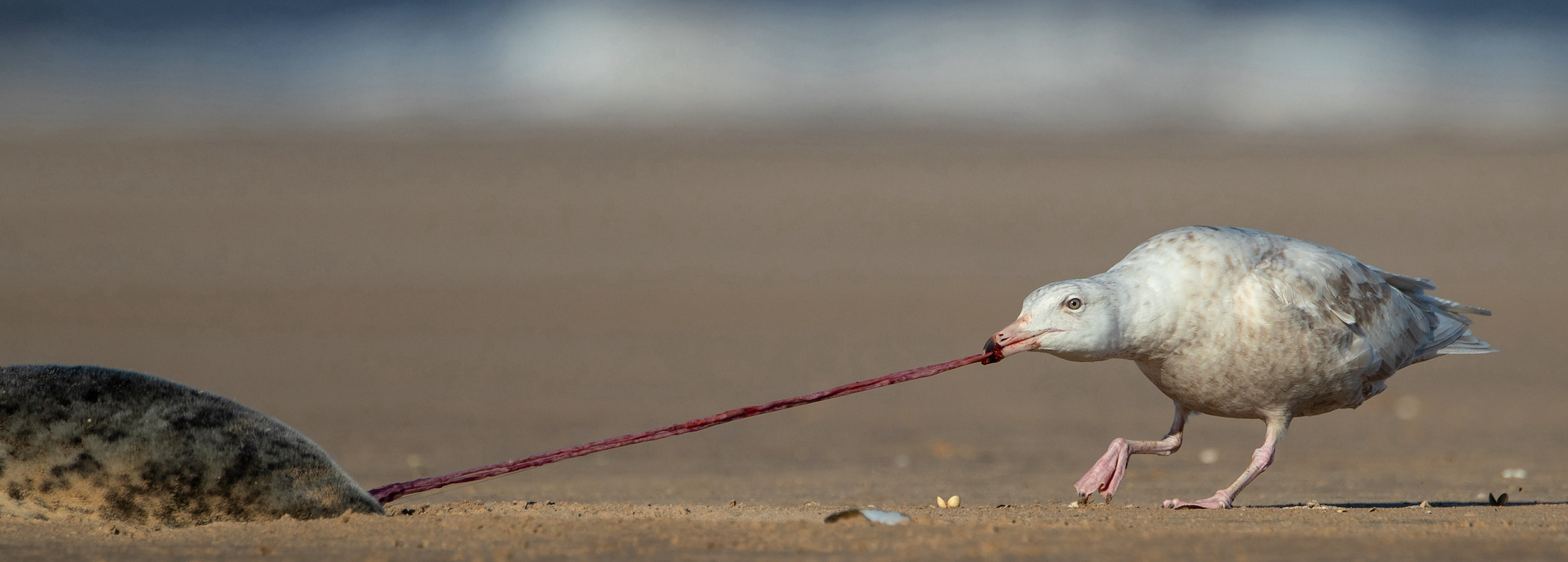Glaucous Gull Larus hyperboreus



The entire world population of the Glaucous Gull Larus hyperboreus breeds in the circumpolar Arctic. It is an annual winter visitor to the county with a catholic diet liable to be found on the coast feeding on vertebrate carcasses, at rubbish tips or coming to bread with other large gulls at seaside promenades. Most records are of 1CY or 2CY birds and the Atlas reported in the 1980s there were around 20 records per year, which was around half the number in the 1990s. An analysis of records in LBR for the five years to 2018 indicates that there was a minimum of 68 records ranging from six in 2015 to 30 in 2017, averaging about 14 per year. Most records (75%) occurred in January-April with January the busiest month. Summer tends to be very quiet with one each in June 2018 and July 2017. There were no records in August-September. Autumn passage tends to be very late with no birds before the end of October. Most birds seen October-December are coastal fly pasts.
Fewer than 100 Glaucous Gulls have been ringed in the UK as a whole, and none in Lincolnshire; of these, recoveries abroad have come from Svalbard and Jan Mayen, Norway and the Faroe Islands. Foreign-ringed birds found in the UK have come from Bear Island (3), Denmark, Iceland (3), Svalbard and Jan Mayen, and Norway.
(Account as per new Birds of Lincolnshire (2021), included September 2022)

